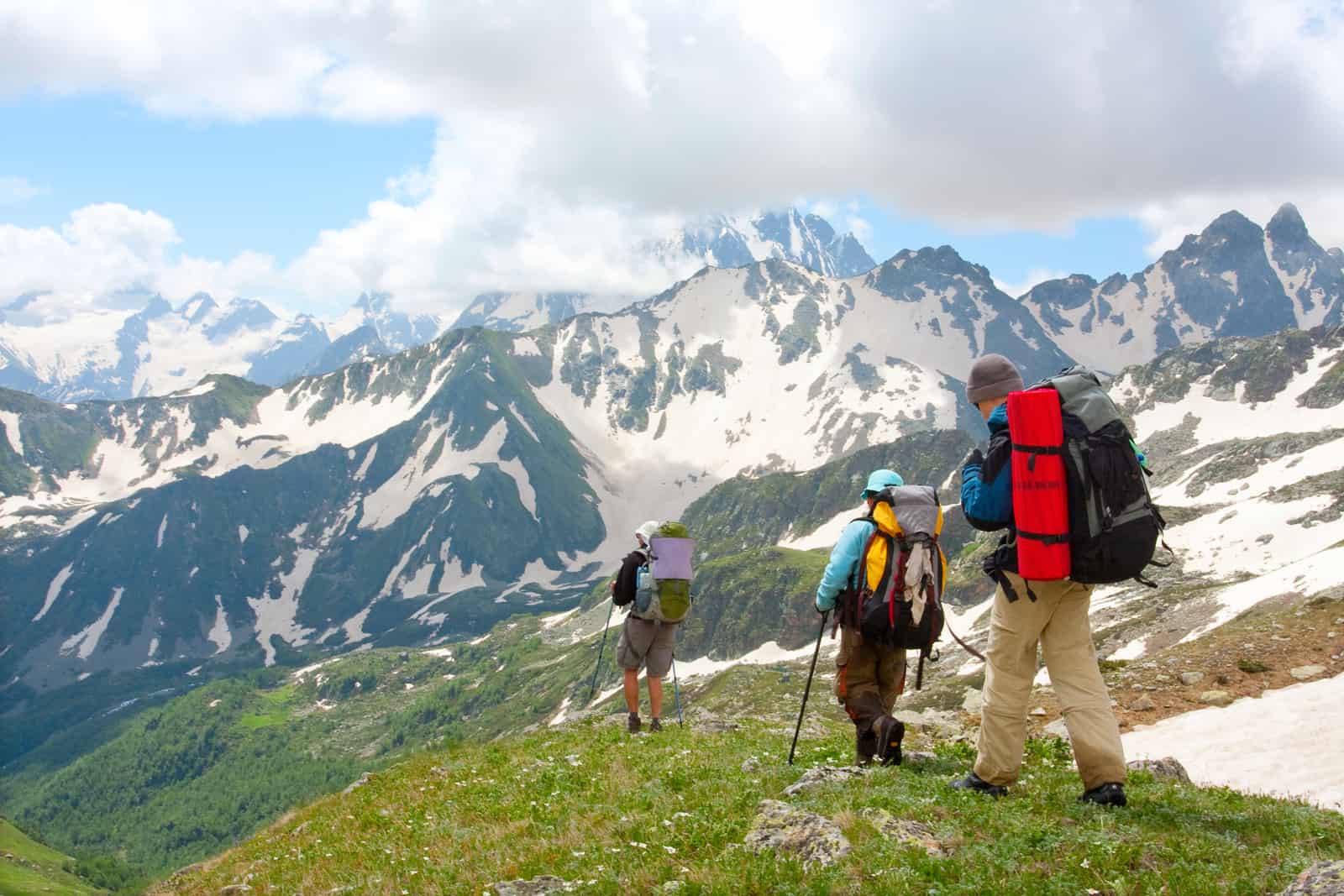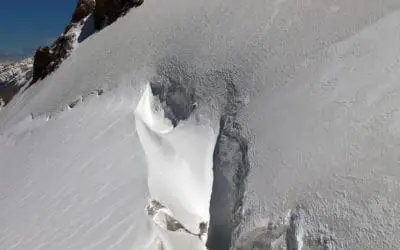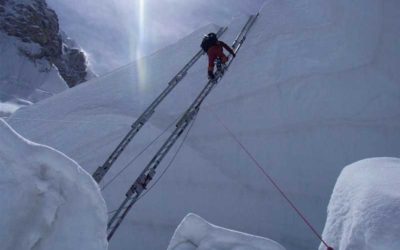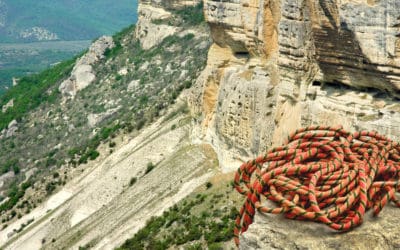
When tackling a proper mountaineering trek, there are a million things to keep in mind. In this article, I aim to summarize the most important ones into eleven do’s and don’ts, just to simplify things a bit.
Some of these are more or less common than others and I’ve tried to not only give cookie cutter tips.
If you are a beginner mountaineer hopefully at least one or two of these will help in your preparation.
Contents
1. Do Your Research
The saying goes, “failing to plan is planning to fail” and it holds true for mountaineering.
When heading for the mountains, you need to know where you’re going, the type of terrain you’re likely to encounter and how long you’ll be gone for.
There are many great online forums that tackle just your mountain. I’d recommend to google your mountain destination and read up from people with experience. Also try contacting a guide in your climbing location for tips.
Plan for unforeseen circumstances and emergencies as well – rather be over-prepared than being caught off-guard by a sticky situation.
2. Don’t Disregard These Kits
Before heading out on a trek, find out what the terrain is like and what dangers you’re likely to encounter. Prepare for these and be aware as you go on your way.
Pack a basic first aid kit, make sure that most of your team knows how to use it and tell someone where you’re going and for how long. If anything goes wrong, you’ll be prepared, which could mean the difference between suffering a minor inconvenience and not making it back at all. I found a lightweight kit on Amazon that works great. You can find it here.
Also pack a kit for making an emergency shelter. You never know what may happen on the mountain. I’d look at shelters that fit more than three people if I was going out in a group. That way you can protect and aid someone inside the tent and still fit. I’d start looking at emergency shelters similar to this one (on Amazon)
Whether you’re doing alpine climbing or heading out in low regions in the heat of summer, any number of things can go wrong at any time. The mountains remain a dangerous playground. Be safe in how you hike, climb, camp and go to the bathroom.
3. Do Carry Enough Food
Sometimes, a trip takes longer than planned. You could get lost; get stuck in foul weather or just underestimate the trail.
Either way, getting stuck without food would suck big time and could render you incapable of pushing through the last bit, just because you don’t have enough energy.
Make sure that your food is nutrient dense and wouldn’t spoil easily.
4. Sharpen and Check Your Equipment
Before you head out, check your equipment. Make sure that you have everything you will need – this will change depending on the route you plan to take and the terrain you’re likely to face.
Check that your equipment is in proper working order. There’s nothing worse than standing in front of a sheer rock face only to realize that your rope is damaged and you won’t be able to use it.
If you’re planning an alpine trek, ensure that your crampons are properly sharpened and fit your boots well.
Also check your backpack – these packs take quite a beating when you use them regularly.
5. Do Bring a Water Purifier
Mountaineering makes you sweat, which means you will dehydrate much faster than on a normal day. Taking in enough fluid will keep your body in good condition and enable you to finish the task at hand.
Severe dehydration can have serious medical consequences and should be avoided at all cost. When packing, make provision for water purification, since you can’t possibly carry enough water with you for the entire trip.
I use a 24oz one from GRAYL that has remained trustworthy for many trips. You can find it on Amazon here.
Also, pack some electrolyte powders – most sport nutrition brands have some easy to use packets that you can just add to your water and gulp down. These are lightweight to carry and won’t take up much space in your pack, but they will pack a serious punch when you need it.
6. Do Wear Hiking OR Mountaineering boots
Your feet are your most important asset on any trip, so taking good care of them is essential.
Consider if you need to buy mountaineering boots or if hiking boots are good enough (Pro tip: In my experience they often are for beginners).
Your shoes should be comfortable and suited to the type of trip you’re taking, whether that means alpine mountaineering where you’ll need crampons or tough, rocky and dusty terrain where you need something a bit more lightweight.
Always pick a shoe that offers ankle support as well, since this will help prevent sprains.
I have written a full article on what to look for when picking out the perfect boots for mountaineering. You can find the article here.
7. Do Learn Etiquette
The motto is “don’t take anything but pictures and leave nothing but footprints”. Seriously, though.
Don’t leave anything behind, because it would spoil the trail for whoever goes there after you. The mountains are a beautiful, unspoiled piece of paradise and should be respected as such.
Before you go, read up on proper toilet etiquette while mountaineering, if you don’t already know. Take an extra plastic bag for your leftover foodstuff and whatever other waste you generate and carry this with you to discard when you get back to civilization.
8. Do Acclimatize
If you’re planning on doing a trip at high altitude or somewhere a lot colder or hotter than what you’re used to, factor in some time to acclimatize.
Especially at high altitudes, this will stand you in good stead, since you would minimize the risk of altitude-related illnesses. It just helps to get used to your environment before you head out into the wild.
9. Do Turn Around
Most deaths on the big mountains have been because of not considering the climb down.
Before you head out, set a time limit on your trip. This could be based on your physical abilities, the weather, your rations, or whatever other limiting factor is applicable.
If you reach that time limit before you summit, be disciplined and turn around, even if the summit seems just around the corner.
Taking risks, especially with foul weather approaching, has claimed the lives of many mountaineers. Rather make it out alive and live to take another stab at that route, even if it’s many years down the line.
10. Don’t Forget the Weather
Mountain weather is notoriously unpredictable. Before you head out, check the latest update on the weather forecast.
While you’re out trekking, keep watchful eyes on the weather, taking precautions if it looks like there’s a storm brewing.
Getting stuck in bad weather, especially when you’re deep into the mountains, is never fun and can be fatal. If the weather isn’t playing along, rather postpone your trip by a few days and wait for better weather. It’s worth it.
11. Do Be Friendly and Helpful
The mountaineering community is well-known for a sense of comradery and companionship. When you pass others on the trail, be friendly. If they ask for help, lend a hand. Next time, you might be the one in need of assistance.
Conclusion
These were only a few basic do’s and don’ts of mountaineering. If you’re keen to lace up your boots and get out there, check out the rest of this site for more information to help you on your way. Happy adventures!
Written by Felix

About me
Hi! I’m Felix. When I’m not spending time out in the mountains, I like to write about my hobbies. That is how Mountain Homies was created. On this site, I try to gather all the juicy information about Mountaineering that I have learned since I started. Happy adventures!
Related Articles
3 Ways to Spot and Reveal a Crevasse (And Avoid It)
So, how do you spot a crevasse and – more importantly – avoid falling into one? In this article, I will have a look at what crevasses are and how to detect them…
3 Clever Ways of Crossing A Crevasse
When you’re mountaineering in snow country, you will undoubtedly encounter some crevasses. These are scary, since you don’t always spot them…
Mountain Climbing vs Rock Climbing: 5 Biggest Differences
The key differences between rock climbing and mountain climbing are the gear requirements, environmental risk, geographical locations, weather and…
Stay Up to Date With The Latest News & Updates
Join Our Newsletter
The owner of this site is a participant in the Amazon Services LLC Associates Program, an affiliate advertising program designed to provide a means for sites to earn advertising fees by advertising and linking to amazon.com.



